Angelfish, with their striking appearance and graceful movements, are captivating creatures found in the freshwater habitats of South America. Often grace home aquariums, these fish are much more than just a pretty face. This article delves into the fascinating world of angelfish, exploring their biology, behavior, ecological role, and relationship with humans.
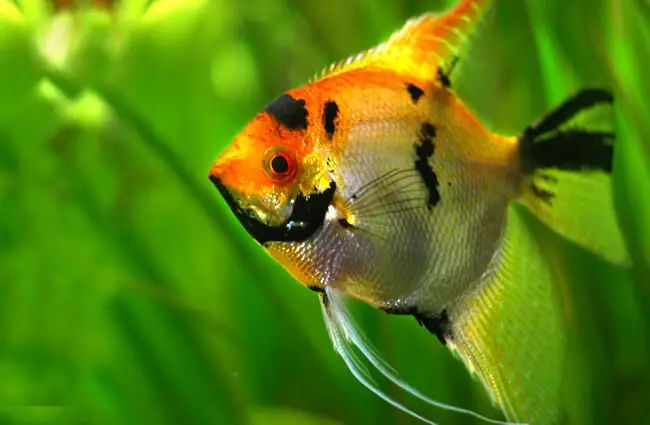
What are Angelfish?
The name “angelfish” applies to several species within the Pterophyllum genus, belonging to the cichlid family. There are three widely recognized species: the common angelfish (Pterophyllum scalare), the banded angelfish (Pterophyllum leopoldi), and the marble angelfish, which is a color variant derived from the common species. These fish are celebrated for their distinctive triangular shape, elongated fins, and elegant swimming style. Mature angelfish typically reach around 6 inches in length.
Physical Characteristics
Angelfish possess a laterally compressed body, meaning they are wide and flat, perfect for navigating dense vegetation. Their fins are proportionally large, contributing to their graceful swimming ability. Coloration varies between species and even individuals, ranging from silver with black vertical bars in the common angelfish to a more uniform black or dark gray in certain varieties. The marble angelfish exhibits a beautiful mottled pattern of colors.
Habitat and Distribution
Native to the Amazon, Orinoco, and Paraguay river basins of South America, angelfish inhabit slow‑moving freshwater environments. They favor flooded forests, lakes, and areas with abundant aquatic vegetation. These areas provide shelter, breeding sites, and a rich source of food. Angelfish are sensitive to water quality, preferring warm, slightly acidic waters. They are often found in areas with a pH between 6.0 and 7.0.
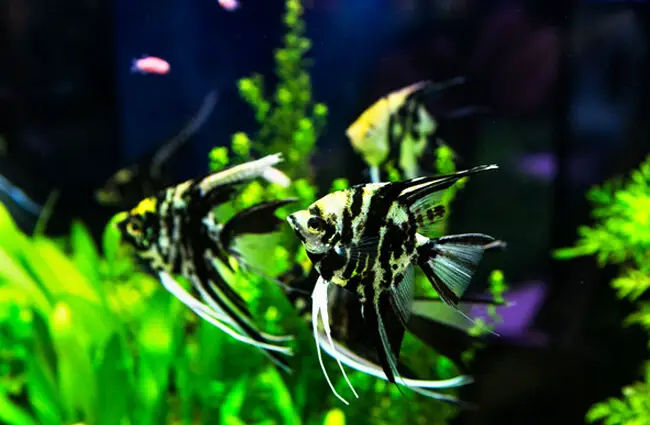
Finding Angelfish in the Wild
If observing angelfish in their natural habitat, look for densely planted areas in slow‑moving, warm water. Early morning or late afternoon are often the best times to spot them as they are more active during these cooler periods. Be mindful of the local environment and avoid disturbing the natural habitat. Remember to practice responsible wildlife observation and maintain a respectful distance.
Diet and Feeding Habits
Angelfish are carnivorous, though their diet in the wild is quite varied. They primarily feed on small insects, crustaceans, and other invertebrates. They also consume mosquito larvae and small fish. In captivity, they readily accept a range of commercial fish foods, including flake food, pellets, and frozen or live foods like brine shrimp and bloodworms. Providing a balanced diet is essential for maintaining their health and vibrant colors.

Reproduction and Life Cycle
Angelfish are known for their unique and fascinating breeding behavior. They form monogamous pairs, often staying together for life. The breeding process begins with a courtship display, involving fin displays and synchronized swimming. The female lays her eggs on a smooth, vertical surface, such as a leaf or a carefully placed slate. Both parents diligently guard the eggs and fan them to keep them oxygenated. The eggs hatch within 24 to 48 hours, and the fry are initially very small and vulnerable. The parents continue to protect and feed the fry for several days until they are able to swim freely and forage on their own.
Parental Care
Angelfish exhibit exceptional parental care. They defend their eggs and fry fiercely against potential predators and maintain a clean environment around the breeding site. This dedication ensures a higher survival rate for their offspring.
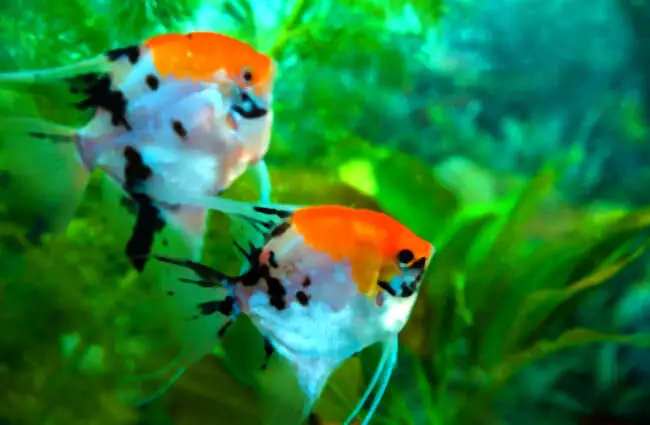
Ecological Role and Interactions
Angelfish play a significant role in their freshwater ecosystems. As predators, they help control populations of invertebrates and small fish. They also serve as prey for larger fish and birds. Their presence indicates a healthy and balanced ecosystem. Angelfish often coexist with other species of fish and aquatic organisms, contributing to the biodiversity of their habitat.
Relationship with Other Animals
Angelfish sometimes interact with other aquatic animals. They may graze on algae or help control invertebrate populations, which assists in maintaining water quality. These interactions support the ecological balance of their environment.
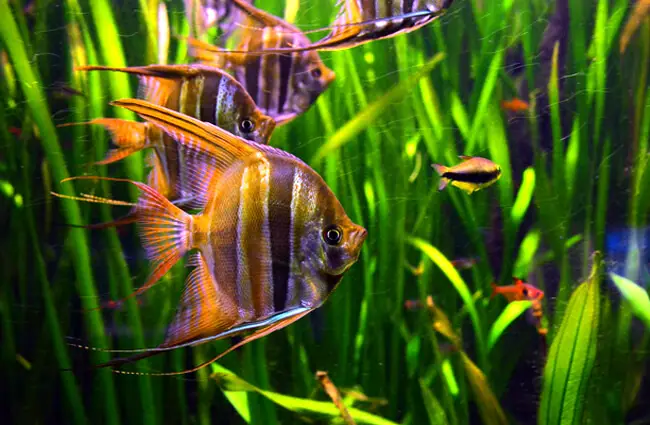
Angelfish and Humans
Angelfish have become popular aquarium fish worldwide. Their striking appearance and relatively peaceful nature make them a favorite among hobbyists. However, it’s crucial to provide them with a suitable environment, including a spacious tank, warm water, and a balanced diet. Responsible aquarium keeping is essential to ensure their well-being. They are also a significant part of the ornamental fish trade, impacting local economies in South America.
Caring for Angelfish in Captivity
When keeping angelfish in a home aquarium, a tank of at least 75 gallons is recommended for a small group. Maintain a water temperature between 78 and 82 degrees Fahrenheit and perform regular water changes to keep water quality high. Provide plenty of plants and decorations to create a natural environment. Avoid overcrowding the tank and be mindful of tank mates, as some species may nip at angelfish fins.
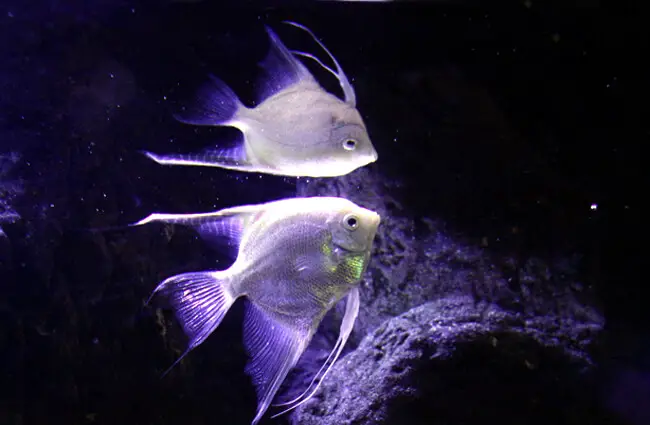
Evolutionary History
The evolutionary history of angelfish, like that of many freshwater fish, is intertwined with the geological history of South America. The Pterophyllum genus is thought to have diverged from other cichlids millions of years ago, adapting to the unique conditions of the Amazon and Orinoco basins. Their distinctive body shape and coloration are likely the result of natural selection, favoring individuals that were better camouflaged and able to navigate dense vegetation. Genetic studies are ongoing to refine our understanding of their evolutionary relationships.
Fun Facts about Angelfish
- Angelfish can change color depending on their mood and environment.
- They can live for up to 10 years in captivity with proper care.
- Angelfish are known to form strong bonds with their mates.
- The fry are initially very small and transparent.
- They are sensitive to sudden changes in water temperature and quality.
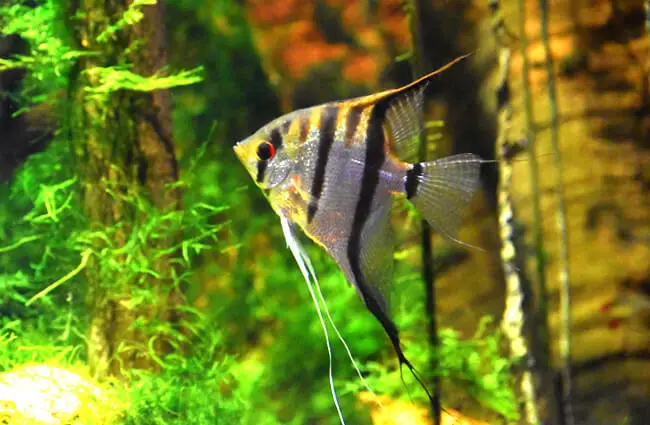
Angelfish are truly remarkable creatures, captivating both scientists and aquarium enthusiasts alike. From their graceful movements to their intricate breeding behaviors, they offer a window into the fascinating world of freshwater ecosystems. By understanding their needs and appreciating their unique qualities, we can ensure their continued survival and enjoyment for generations to come.

![Red Angus Closeup of a beautiful Red Angus cowPhoto by: U.S. Department of Agriculture [pubic domain]https://creativecommons.org/licenses/by/2.0/](https://animals.net/wp-content/uploads/2020/03/Red-Angus-4-238x178.jpg)




![Red Angus Closeup of a beautiful Red Angus cowPhoto by: U.S. Department of Agriculture [pubic domain]https://creativecommons.org/licenses/by/2.0/](https://animals.net/wp-content/uploads/2020/03/Red-Angus-4-100x75.jpg)

